"Everyone is a moon, and has a dark side which he never shows to anybody." -Mark Twain
Back before the telescope was invented, Saturn was known as the Old Man of the Skies. The slowest-moving of the naked-eye planets, it's the only one that would reliably be in nearly the same location, year after year. You can find it all summer, after sunset, by following the "arc" of the handle of the big dipper all the way until you run into the brightest northern-hemisphere star, Arcturus, and then speeding on to the very bright Spica. Saturn is right next door.
But everything got an awful lot more interesting once the telescope was developed. What was a bright, slowly moving point of light for all of humanity suddenly transformed into the ringed wonder we know today.
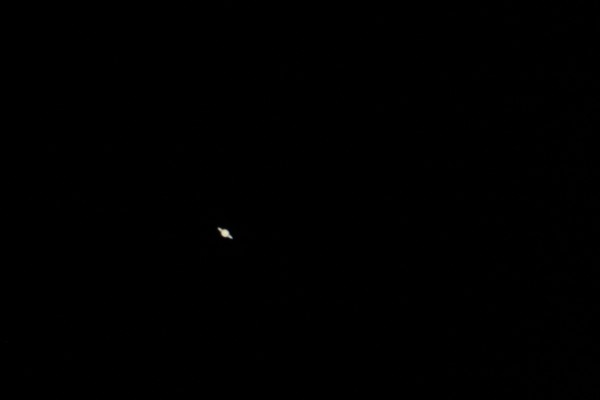
Image credit: BKellySky of http://bkellysky.wordpress.com/.
Saturn, as you know, has the most complex and spectacular ring system of any planet discovered so far. While you can see the ringed structure even through a good pair of binoculars, the best views come from NASA's Cassini mission, presently orbiting the ringed giant and photographing as much of it as possible.
The best picture I've ever seen of its rings? That would be this one, taken from when the Sun was directly behind the planet.
But Saturn isn't all by its lonesome out there. Just as we, on Earth, have our Moon to keep us company, Saturn has a family of its own. A very, very large family, with one member that's unique in all the Solar System.
Although there are more than 60 moons orbiting Saturn, the largest one, Titan -- visible here with its shadow falling on the gas giant -- is remarkable for a number of reasons.
Sure, it's big: larger than our Moon, larger than Mercury, and, at 5150 kilometers across, it's the second largest moon in the Solar System.
We've known about it for a really long time. Discovered in 1655 by Christiaan Huygens, Titan was the first moon discovered to orbit a world other than Earth or Jupiter.
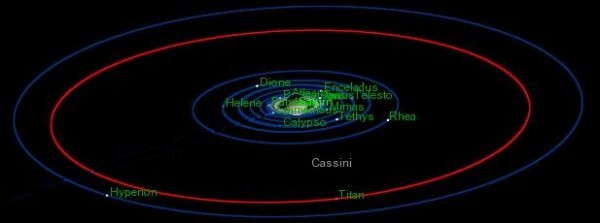
Image retrieved from http://www.wingmakers.co.nz/universe/solar_system/Titan.html.
But unlike every other Moon ever discovered, and unlike even planets like Mercury and Mars, Titan is the only Moon known with an atmosphere so significant it's even thicker than the one here on Earth!
While this was long suspected, it was Voyager 1, the first spacecraft to visit Titan, that really showed us just how severe this atmosphere was.
A thick nitrogen atmosphere, hundreds of kilometers thick, with a dense photochemical haze in the upper layers, obscures the surface from every single one of Voyager's visible-light pictures. With a surface pressure that's 60% greater than Earth's despite being just a fraction of our size and having just one-seventh of our gravity, Titan's atmosphere is actually more massive than our own.
But nitrogen is transparent to visible light; there's something more interesting than just a thick nitrogen atmosphere at work here.
Thanks to the Cassini spacecraft, we were able to find methane molecules being broken apart by ultraviolet light from the Sun, producing other, more complex compounds, including ethane, acetyl alcohol, and even amino acids!
But that isn't all that Cassini came outfitted with. In addition to visible light equipment, it's also capable of seeing into the ultraviolet, which doesn't help much, but the infrared as well! Shown in red and green, below, the infrared filters allow us to see down, through the thick clouds and haze, all the way down to the surface of the most planet-like of all the moons.
Initially, we couldn't tell what those dark features on Titan's surface were. Was it a vast ocean of methane, like our oceans on Earth? The chemistry, based on the temperatures and pressures present, would be close. Or is it just a case of differently-colored rock, like the maria of our Moon?
The great dark area, known as Shangri-la, was going to be the target of the first great experiment down to the surface. Because the Huygens probe, named after Titan's discoverer, was launched from Cassini, and became the first spacecraft -- in 2005 -- to land on a rocky body in the outer Solar System.
Descending through Titan's atmosphere and landing on the plains of Shangri-la, Huygens found mountains, valleys, strong evidence of past (but not present) liquid, and a dry, dark surface. Shangri-la was no lake.
But that doesn't mean the surface of Titan looked very much like the surface of our Moon. To me, it looked much more like a rocky cove once the tide's gone out.
But despite not finding any liquid at its landing site, Huygens and Cassini have learned an awful lot about the surface of Titan, and there is liquid there! There's evidence that Huygens has heard a methane waterfall, methane rain, clouds and evaporation are Titan's version of a water cycle, and thanks to the power of radar imaging, Cassini has confirmed that there are liquid methane lakes near the poles!
Based on what we know about Titan now, after nearly a decade of Cassini imaging, the cold regions near Titan's poles have abundant liquid methane, but the warmer regions, near the equator, ought to be dry. Liquid methane in those regions wouldn't last long and ought to boil off, so knowing what we know now, a methane lake near a tropical region of Titan would be a surprise.
Well, guess what? Surprise! A region about the size of the great Salt Lake, near Titan's equator, came back as a completely black area on Cassini's radar, the telltale signal of liquid methane!
Because of how rapidly methane evaporates, this 927-square-mile lake near the equator (and not far from the Huygens landing site) must be fed by an underground aquifer of methane, according to Cassini scientist Caitlin Griffith. According to the NASA press release:
"An aquifer could explain one of the puzzling questions about the existence of methane, which is continually depleted," Griffith said. "Methane is a progenitor of Titan's organic chemistry, which likely produces interesting molecules like amino acids, the building blocks of life."
So, in a world flush with amino acids, there are underground stores of liquid that flow and pool near the equator, in an environment that's not much different -- save for being significantly cooler -- than a very young Earth was. Are you thinking what I'm thinking?
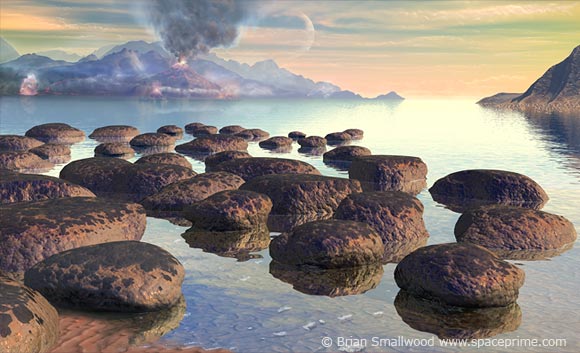
Image credit: Brian Smallwood, http://www.spaceprime.com/.
Maybe, just maybe, Titan is another world in the Solar System where life, no matter how primitive, has found a way. Regardless of whether that's the case or not, we've still made an amazing breakthrough learning about the planetary science of this unique world:
"We had thought that Titan simply had extensive dunes at the equator and lakes at the poles, but now we know that Titan is more complex than we previously thought," said Linda Spilker, the Cassini project scientist based at NASA's Jet Propulsion Laboratory, Pasadena, Calif. "Cassini still has multiple opportunities to fly by this moon going forward, so we can't wait to see how the details of this story fill out."
The quest for extraterrestrial life in the Universe may take us to places vastly different from anything we've ever experienced; I can't wait to see how the details fill out, either!
- Log in to post comments

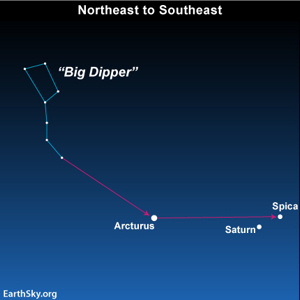
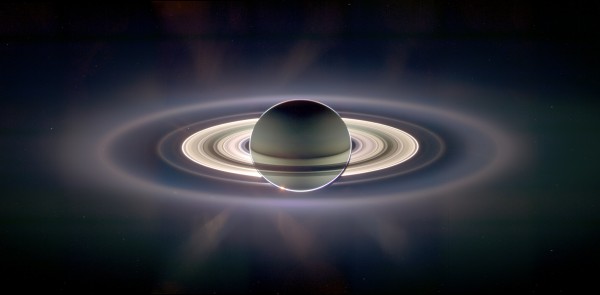
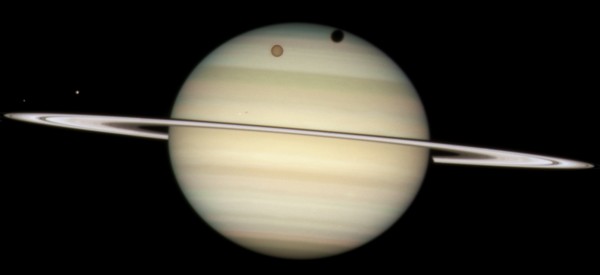
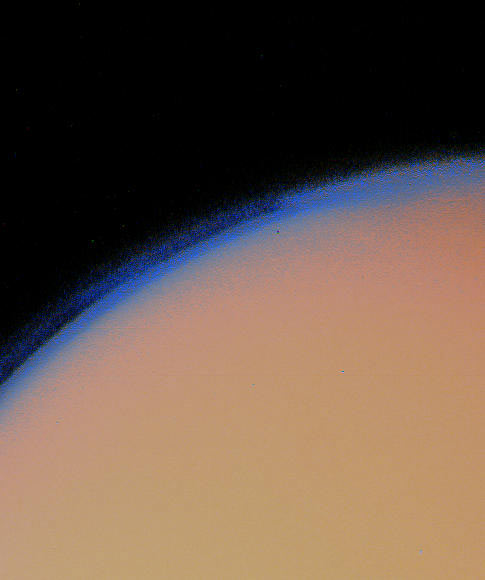
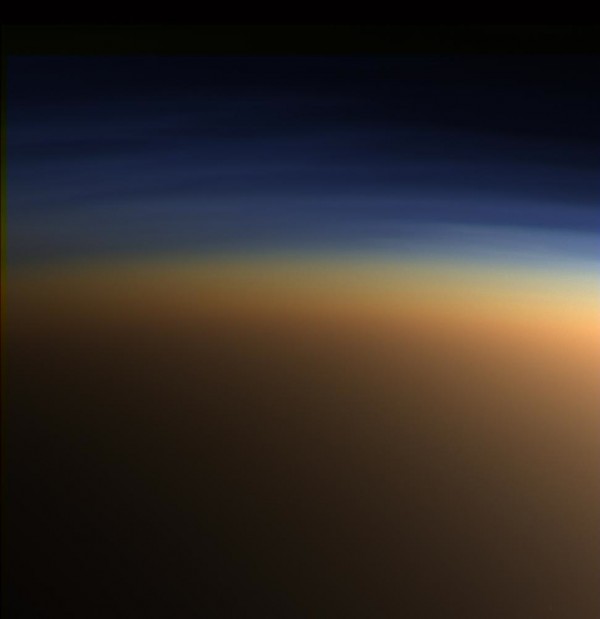
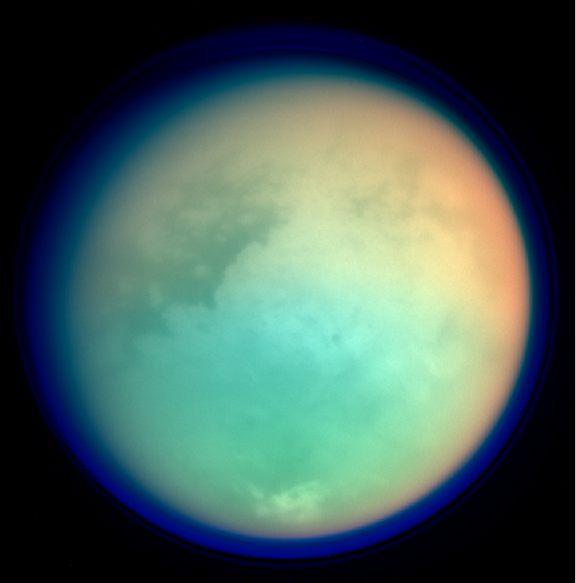
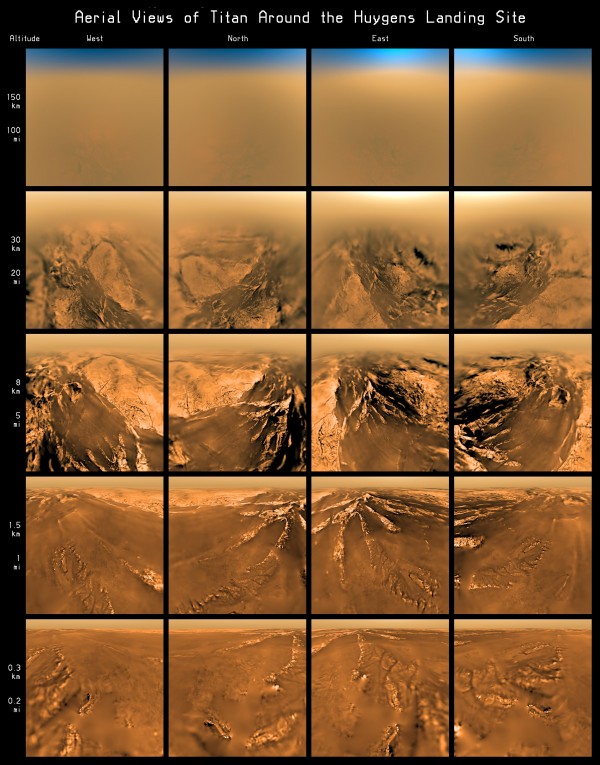
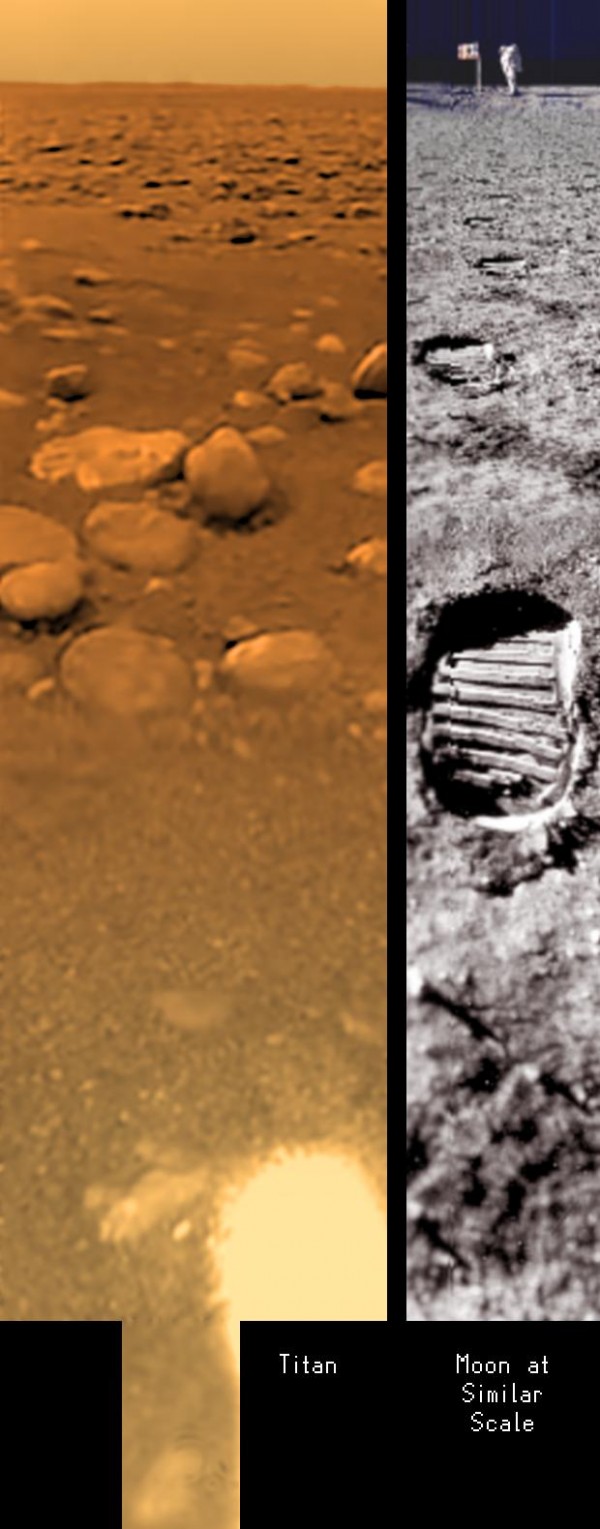
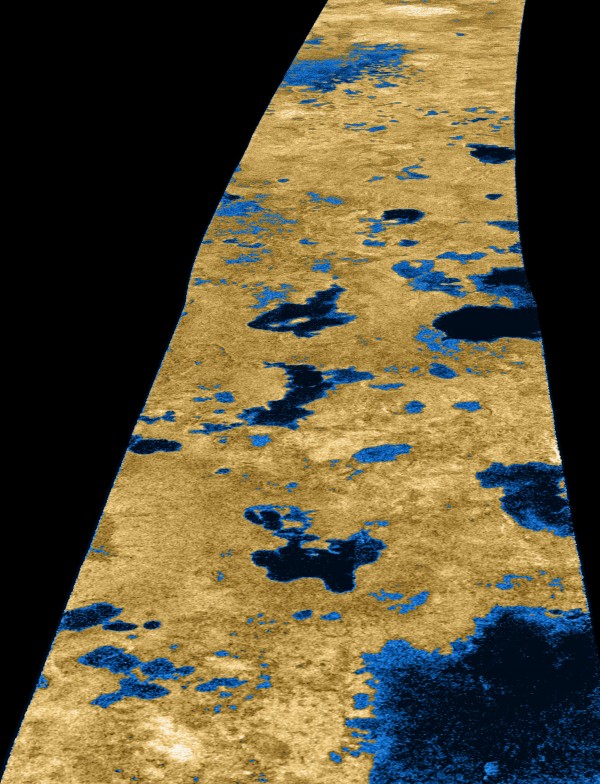
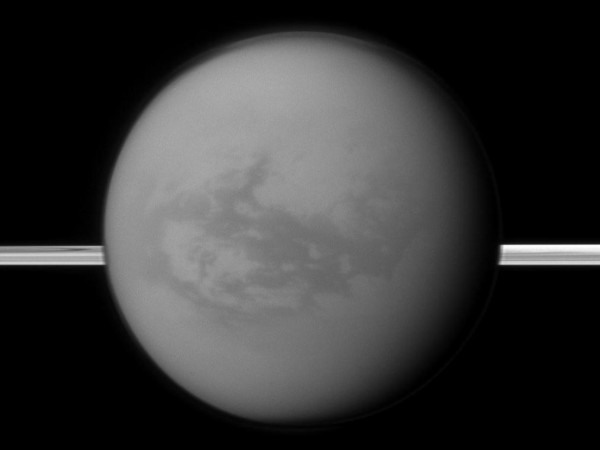
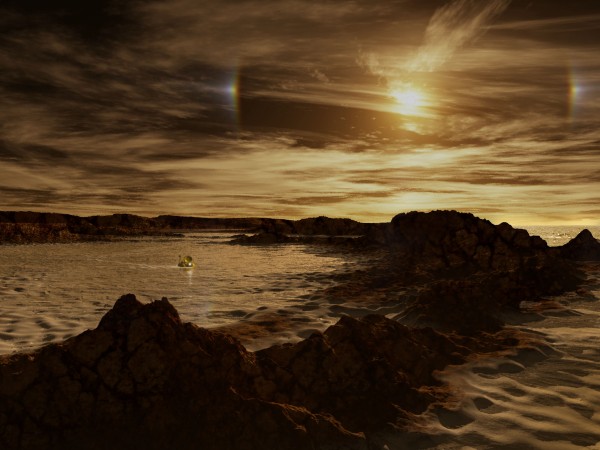
All this time we were looking for cryovolcanos when we should have looked for cryoaquafers!
A well rounded article as always. I didn't know about the Huygens putatively hearing waterfalls, but I do believe I've read the claim that it detected an increase in methan vapor when landing, meaning the surface was soaked, not entirely dry.
Currently Titan naively tests best for life outside of Earth, IIRC methane metabolism would use hydrogen to produce acetylene, and there is an unambigious near surface lack of the first and possibly a surplus of the other. The hydrogen lack can't be explained by atmospheric models, but could of course be explained by some nonorganic cold surface chemistry. But metabolism is good to amp up reaction rates with enzymes.
And of course a subcrustal supply of organics is good. Titan is differentiated and believed to have (unfortunately an ammonia soaked, IIRC) subsurface ocean like Europa. Water, organics, minerals and heat energy towards its core may come together, all the necessary ingredients for life.
Nit:
True as far as planets go, we have 8 of them and don't expect more. (And the best, latest Nice models imply we ejected at least one outer Neptune.) All the other giants and neptunes observed rings are much punier: Jupiter, Neptune and I believe Uranus.
But FWIW there is at least one exoplanet (or brown dwarf) that has a much more spectacular planetary ring system:
""Eric Mamajek showed us the transit of an extrasolar ring system, the first ever observed. This research used archival photometry from two small programs dedicated to finding hot Jupiters: SuperWASP and ASAS-3. These teams made their data public and Mamajek and his team ran their stars through the data reduction pipeline, thinking they might be able to find rotation periods. But what they found was a complex, bizarre looking transit that blocked 95% of light at the transit minimum. This transit was seen in both data sets.
The team ruled out the most straightforward explanations, those of a transiting planet or circumstellar disk. The transit, lasting 52 days, is full of substructure: each day shows variations and there are times when the star returns to 100% brightness and is briefly unobscured. The simplest model, found by modeling the daily averages, is one with three sets of rings. The rings are thin and the gaps are clean. The rings have a radius of 0.1-0.4 AU – they’re huge – and under the assumption that they have a similar composition to Saturn’s rings, their mass is roughly 0.4 to 8 times the mass of the Moon.
Though Mamajek calls this transiting system “Saturn on steroids,” the astronomers aren’t sure what’s inside the rings."
Incidentally, another contextual and endearing quote from that page:
""“Planets are like cockroaches” – when we’ve seen one planetary system like this, we know there are more out there."
Oops. Aquifer, methane - my new browser default spell checker isn't really helpful.
That Titan waterfall paper was written in 2004. I recall Huygens landing on Titan in 2005. Now I haven't read the paper to see if Huygens heard a waterfall but I'll take your word for it.. :P
Let the bio-astronomers go fishing in The Great Methane Lake of Titan!!
Give them whatever they need: spacecraft, instruments, labs,.. grants.
I don't expect catfish jumping; I expect something alive!
Nice discovery for an underfunded space exploration program.
I personally am going to need a round trip SpaceX ticket for three from Earth to The Great Methane Lake, a hotel on the methane, a sailboat, dry suits, camera equipment, and a personal chef.
Ethan, I think you've overstated the "waterfalls" case. As Thomas noted, the paper you mentioned predated the Huygens landing by more than a year, and was a speculation based on the author's studies of space acoustics.
n a 2009 review (http://eprints.soton.ac.uk/71546/) Leighton states clearly that Huygens did not make any recordings of ambient sound.
Thomas and Michael,
Thank you for the correction on the Waterfalls sound. I had remembered hearing the audio file from back around the time of the Huygens landing and didn't go back and look up whether that was a simulation or an actual recording.
Looks like I'll have to refrain from mentioning that anymore; thanks for keeping me honest and setting me straight!
Ethan, you may have overstated the amino acids case as well. Is there any hard evidence for their presence, or are the paper's authors merely speculating? Since the setting is so reducing chemically, their formation and stability could be questioned.
It's ok Ethan. "Water"falls certainly exist on Titan whether we hear them or not. And the simulated sounds still sound sexy when we are tryin to impress the ladies.
And if life is a natural consequence of the universe, there is a solid chance that Titan has it. Beneath the surface are a huge number of potentially zones of habitation for convention forms of life, while the surface itself presents an awesome opportunity for completely alien forms of life.
It looks so much like a living breathing world that it's almost shocking not to see the remains of Titan pond scum lying around everywhere. We need to send probes to the poles to see what's what. Regardless Titan has my vote for second neatest rock in the Solar System (after Earth).
I have a board on Pinterest where I curate images and articles about space. It's a shame this site blocks Pinterest, even though it allows posting to Google Plus (which posts the image from the post), Twitter, etc. Please consider removing that block.
Aquifer? Maybe "methanifer."
Great article about a fascinating world. Torbjörn Larsson, your comments are very informative until you get to the statement "True as far as planets go, we have 8 of them and don’t expect more." Why is this statement of what is clearly an opinion, not a fact, relevant or necessary here? We have a lot more than 8 planets in our solar system, and the first small planet beyond Neptune may very well have a ring system of its own. New Horizons is currently turning the Hubble Space Telescope toward the planet Pluto to check for rings because of the potential hazard of the spacecraft hitting particles of a ring system we didn't know existed.
One thing I've never heard addressed is the temperature difference. Wouldn't chemistry run a lot slower at that temperature? If so, how would that effect life? Could it be that life formed on Titan a long time ago, but due to the slow metabolic rate, it hasn't had more than a few hundred generations' of evolution?
Chemical reactions would run slower than they would at higher temperatures or indeed not at all if too cold.
However, the chemical reactions produce energy at a rate that is equal to the rate of reaction times the energy released per reaction.
Therefore it depends on what chemical reactions take place to power the processes of life as to whether life will run slower.
@ Laurel Kornfeld
“True as far as planets go, we have 8 of them and don’t expect more.” Why is this statement of what is clearly an opinion, not a fact, relevant or necessary here?
Because it establishes the context in which Ethan's comment was almost certainly correct. Setting aside the "planet" debate, it is still inordinately unlikely that we will find a large planet beyond Neptune capable of supporting a massive ring structure. If Pluto has rings, then they are going to be ephemeral things that would be relevant to a mission that might pass through them and just interesting in general, but pose no threat of deposing Saturn as the King of Rings (in our solar system).
No, Pluto will not depose Saturn as King of the Rings. However, that doesn't mean Pluto isn't a planet or that small planets aren't planets or that our solar system has only eight planets, which it does not. What you really mean is that we are unlikely to find any more gas giants beyond Neptune. Larsson would have done better to specify that.
Pluto being out-massed by non-gravitationally-bound objects in its orbit by a factor of over 10:1 while the 8 planets all out-mass the rest of their orbit by a factor of at least 1000:1 is why it's not a planet. I don't see how ignoring a 5 order of magnitude gap in gravitational dominance, and the current definition of planet, would be inherently better other than it would mesh with your own personal opinion that such a gap in dominance should be ignored and the definition is hooey.
I can't wait for the day when a new generation has been raised who is no more shocked that Pluto isn't a planet than they are that Ceres isn't.
Regarding Avi and Wow's comments regarding very-slow life processes (um, I'll abbreviate that to VerSLiP), there was a recent discovery of some bacteria buried in the ocean floor from 86 MYA that are profoundly frugal and long-lived.
We used to think that life had to ultimately have energy inputs from our star, but the deep vent tube worms proved that idea wrong. Our ideas about what conditions are necessary for life get broader as we shed our terracentric views. Besides, any life there would have evolved to work within the given parameters, n'est-ce pas?
http://www.npr.org/2012/05/17/152936168/ancient-deep-sea-bacteria-are-i…